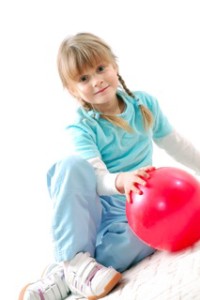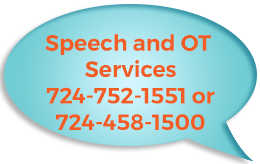Occupational Therapy
What Is Occupational Therapy?
In its simplest terms, an occupational therapist (OT) and certified occupational therapy assistant (COTA) help people across the lifespan participate in the things they want and need to do through the therapeutic use of everyday activities (occupations). Common occupational therapy interventions include helping children with disabilities to participate fully in school and social situations, helping people recovering from injury to regain skills, and providing supports for older adults experiencing physical and cognitive changes.

Occupational Therapy for Children:
To help address Sensory Issues (difficulty with touching, hearing, seeing, and feeling)
- May chew excessively on clothes, objects, and other items
- Touches excessively
- Shows decreased awareness of pain or temperature
- Withdraws from or does not like being touched or displays aggressive social behavior.
- Does not like to stand in line or have others too close
- Avoids or overreacts when “messy”
- Doesn’t seem to notice hands or face are “messy”
- Doesn’t tolerate lotions, soaps, or baths
- Has difficulty tolerating bright lights or noises
- Afraid of activities such as swings, merry-go-rounds, slides
- Has excessive need for fast movement activities
- May sing or rock self often
- Highly distractible, can’t pay attention.
- Impulsive, unsafe behavior.
- Difficulty staying in seated position or sitting still.
- Has not become either left-handed or right-handed
- Presses too hard or too soft when writing
- Cannot follow target with eyes or reverses or misses information
- Poor visual attention
- Gags easily
- Immature chewing patterns
- Avoids certain foods
- Stuffs mouth with food
- Messy eater
- Chews on non-food objects
- Requires assistance to feed self
To help address Behavior, Attention and Distractibility:
- May scratch, hit, pinch, or bite
- Difficult to calm when upset
- Impulsive, unsafe behavior
- Disorganized
- Seems to understand directions but doesn’t complete tasks
- Highly distractible, can’t pay attention
- Impulsive, unsafe behavior
To help with Body Awareness / Balance / Strength / Coordination of Upper Body:
- Avoids activities that require balance or movement or clumsy
- Turns to avoid crossing arm or leg across to other side
- Tires more easily and lacks energy
- Low or high muscle tone
- Difficulty staying in seated position or sitting still.
- Weak or unusual pencil grasp
- Poor handwriting
- Has not become either left-handed or right-handed
- Presses too hard or too soft when writing
- Refuses to participate in fine motor activities
- Difficulty picking up small items or using fingers individually
- Child has difficulty with fasteners or dressing



